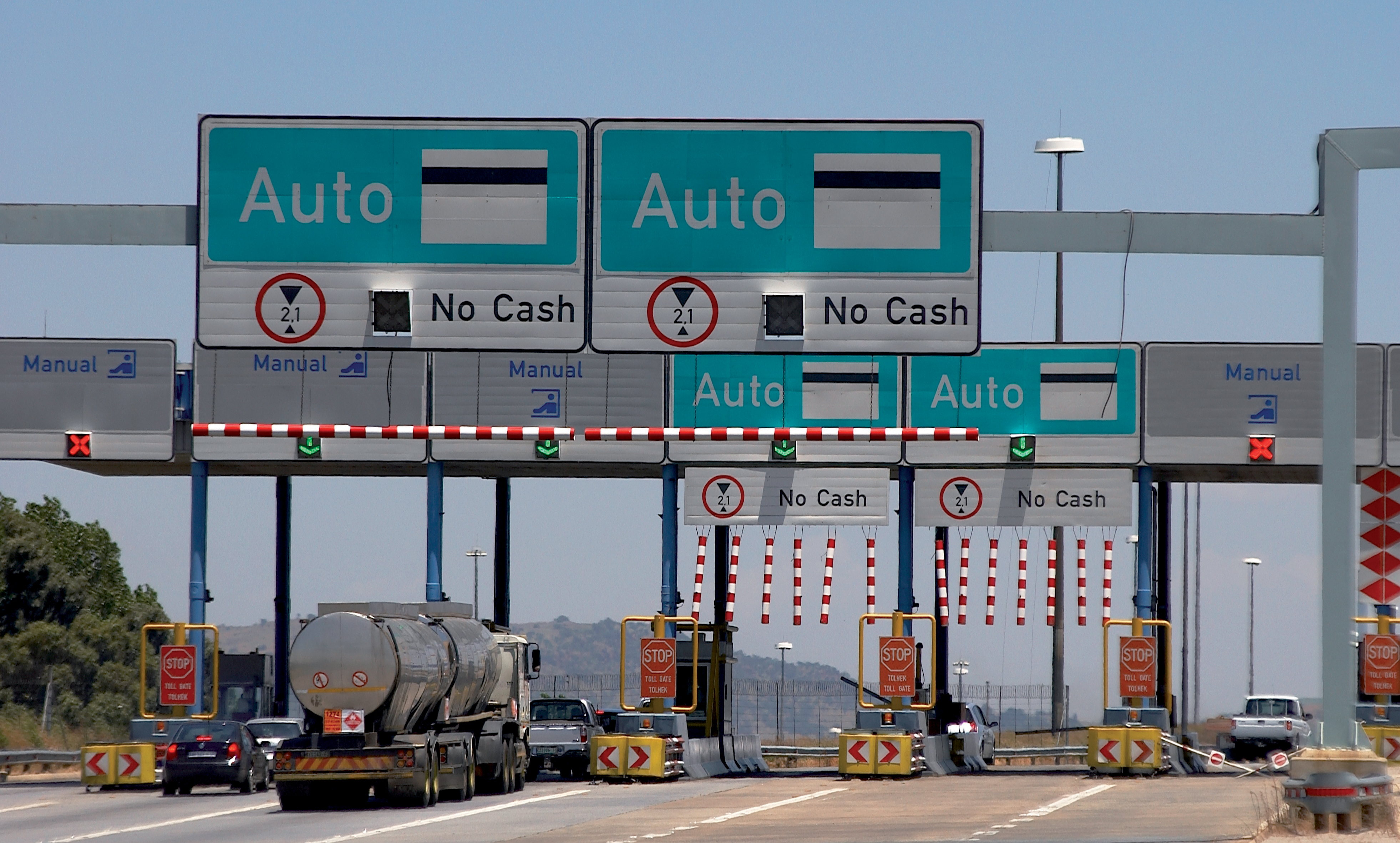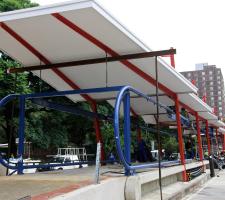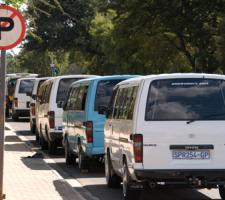
The advent of open road tolling will increase pressure to improve compliance
Paul Vorster, CEO of ITS South Africa, takes a look at the national enforcement situation in the year when the country gears up to host the FIFA Soccer World Cup
There are four main drivers pushing the growth of ITS-related law enforcement within South Africa. These are: transport operations associated with hosting theSoccer World Cup 2010
During the four weeks of this year's Soccer World Cup about 450,000 spectators and soccer enthusiasts will flock to the nine host cities. Transport operations will be put to the test, in particular on match days when day visitors will converge on the match venues. All the host cities have developed transport operational plans. This will ensure that the smoothest possible traffic flow to get spectators to and from match venues and enthusiasts to and from fan parks will happen as efficiently as possible.Around the match venues there will be strictly enforced traffic exclusion zones with only authorised vehicles allowed into the so-called FIFA zones. Examples of authorised vehicles include: VIP vehicles for heads of state and their protection teams, FIFA representatives, match officials and teams; sponsors; media; suppliers; and caterers.
The traffic exclusion zone and traffic flow require lane closures, route deviations and in some cases temporary one-way streets, which will be different on match days compared to other days. Signage and guidance by pointsmen directing traffic will be required, but with law enforcement should it be required.
The safety and security of VIPs and spectators require strict access control for all vehicles - and their occupants - and the goods or equipment that vehicles such as outside broadcast services transport into the stadium precinct. These vehicles will undergo a search outside the stadium precinct and will then move along a secure corridor into the stadium precinct.
The thousands of pedestrians will fill the sidewalks with dedicated pedestrian routes from drop-off points to the stadium. Safety requires support from the law enforcement community to maintain a separation between those travelling on foot or by vehicle. Parking will be at a premium and on-street parking in particular will be limited and controlled to prevent stationary vehicles from obstructing traffic flow and creating dangerous conditions. Since issuing tickets for illegal or dangerous parking will not remove unsafe vehicles or obstacles, it may require that a traffic officer authorises tow trucks to remove illegally parked vehicles or obstacles.
The transport operational plans provide for drop-off zones from where pedestrians will walk, park-and-walk, park-and-ride and use various shuttle services from sites such as the airport. Apart from guidance by wardens, managing the sheer number of cars, taxis, buses and coaches with thousands of pedestrians will require a strong contingent of law enforcement personnel and equipment.
Increasing congestion
The second driver is traffic management actions linked to increasing congestion.Several factors contribute to a severe modal imbalance impacting negatively on transport efficiency and safety and the environment. This has resulted in congestion approaching gridlock that undermines productivity and rampant traffic violations. Only a holistic approach that includes inter alia a better modal balance, expanded traffic management measures and developing efficient public transport will start addressing the transport scenario in South Africa.
Fortunately, there are several projects either already under way or in a planning phase that will collectively result in a transport revolution in South Africa, changing the face of the country. Hosting the FIFA Soccer World Cup in 2010 has added political pressure to accelerate this transformation. Consistent law enforcement is a critical element in the required holistic approach.
South Africa ranks amongst some of the worst performers on road safety in the world. The
This is the clearest possible indication that law enforcement simply must be part of the solution.
New public transport systems
As an economy in transition South Africa has been experiencing rapid urbanisation, a fast-growing middle class buying private vehicles, growing inward immigration - legal and illegal - from especially fellow African countries, a backlog in maintaining and building new transport infrastructure, inferior public transport and a unhealthy bias in favour of private vehicle and road-based transport. The 15-seater 'minibus taxi' provides transport to at least 65 per cent of the countries commuters.The decline over the past few decades of rail infrastructure, rolling stock and management systems has seen a disproportionate percentage of freight moving from rail to road. This imbalance between road and rail is one of the system defects being addressed.
This is clearly not a sustainable transport model and the South African Government is investing more than €e80 billion in infrastructure in a rolling three-year plan.
There are several flagship transport projects underway as part of the transport revolution that is changing the face of South Africa.
Johannesburg has already rolled out the first phases of its Bus Rapid Transport (BRT) system. Many of the Soccer World Cup visitors will use the BRT to get to match venues and for other trips along with local commuters. Cape Town and Port Elizabeth have progressed far with their respective BRT systems and cities such as Pretoria (Tshwane), Durban (eThekweni) and East London (Buffalo City) are following suit.
The minibus-taxis will be losing significant market share to BRT. The BRT systems will, however, be vulnerable on several scores, and this brings law enforcement to the fore. The minibus- taxi industry is notorious for its lack of respect for the law and its strong-arm tactics. At least three law-enforcement issues need attention.
Firstly, protecting commuters, bus drivers and ticketing staff from intimidation and even assault is paramount. For example, in the week of the first BRT buses running, a drive-by shooting occurred that injured two passengers. This falls in the sphere of responsibility of the police and crime intelligence.
Secondly, operational law enforcement has to deal with issues such as fare collection and managing fare evasion, personal safety and security of commuters on the stations and buses, and preventing vandalism.
Thirdly, a critical aspect of law enforcement in the operational arena will be to keep non-authorised vehicles out of the dedicated BRT lanes. Should minibus-taxis stage a protest and block the BRT lanes, the system will grind to a halt. ITS systems will play an important part in early detection of incidents.
Vehicle and driver-related crime
The South Africa Government is planning to introduce a high-tech identity card to curb a range of violations, including fraudulent drivers' licences. The Automobile Association of South Africa has earlier estimated that there may be as many as 4 million drivers without valid drivers' licences. The National Traffic Information System (eNaTIS) is working towards improved data security. This will contribute towards 'weeding out' of suspect vehicle registrations.Speed and red-light running enforcement will contribute to reducing South Africa's very bad road safety record. The same applies to moving violations such as dangerous overtaking or vehicles that are not roadworthy, and driving under the influence of alcohol or drugs. While the primary tool will remain awareness and education, law enforcement is again a vital element of promoting compliance.
As part of its 'transport revolution' South Africa is introducing Open Road Tolling (ORT) on part of the freeway network in and around Johannesburg and Pretoria. By its very nature, ORT involves tolling on large motorways at high speeds. Vehicles do not stop at plazas but rather get identified by gantries erected over the road and the toll transaction is processed against an account held in a back office. The toll charges will be applied to all vehicles. Since there are no booms, usage of the road cannot be denied to a driver who does not pay, so highly effective collection and enforcement operations are required to maximise compliance by the public and ensure the success of the project. This is particularly true in a non-compliant environment like South Africa.
The modal imbalance between road and rail has resulted in a disproportionate percentage of freight moving by road. The high number of freight trucks relative to cars is detrimental to the already very bad road safety record.
In addition, overloading by many truckers is causing severe damage to the road pavement. As a result overload control has become a key strategy in promoting transport efficiency, safety and to prevent road damage.














